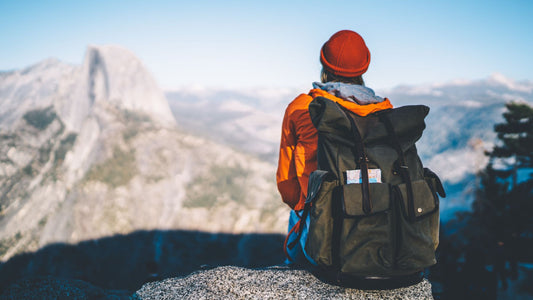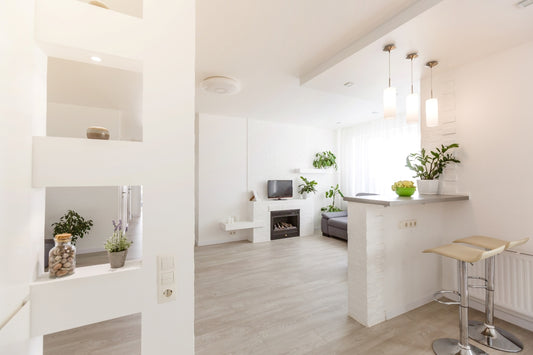In recent years, a novel trend has been steadily gaining momentum in the realm of travel and wellness: Sleep Tourism. Defined by its emphasis on rejuvenating slumber experiences in exotic locales, sleep tourism offers a unique fusion of travel and relaxation, promising a restorative escape from the demands of everyday life. As this phenomenon continues to captivate globetrotters seeking solace and serenity, it's crucial to delve into what makes sleep tourism so alluring, why it's becoming increasingly popular, and how you can embark on your own dreamy adventure.
What is Sleep Tourism?
At its core, sleep tourism is a specialized form of travel centered around promoting restful sleep and overall well-being. It goes beyond traditional vacations by prioritizing accommodations, activities, and environments conducive to deep relaxation and quality slumber. Whether it's retreating to a tranquil beachfront villa, indulging in spa treatments aimed at enhancing sleep quality, or immersing oneself in the therapeutic embrace of nature, sleep tourism offers a spectrum of experiences tailored to soothe the mind and body.
In essence, sleep tourism recognizes the profound impact of sleep on physical health, mental clarity, and emotional resilience. By curating experiences that facilitate optimal rest, travelers can harness the transformative power of sleep to recharge, recalibrate, and reconnect with themselves and the world around them.
The Rising Popularity of Sleep Tourism
The burgeoning popularity of sleep tourism can be attributed to several intersecting factors that resonate with modern travelers:
-
Stress Relief and Wellness: In today's fast-paced world, stress and burnout have become ubiquitous concerns. Sleep tourism offers a sanctuary for weary souls to decompress, unwind, and replenish their energy reserves. By prioritizing relaxation and self-care, travelers can embark on a journey of holistic healing and rejuvenation.
-
Mindful Travel: As mindfulness and conscious living gain traction, travelers are seeking experiences that align with their values and aspirations. Sleep tourism encourages a mindful approach to travel, inviting individuals to savor the present moment, cultivate inner peace, and nurture a deeper connection with themselves and the environment.
-
Health Consciousness: With growing awareness of the importance of sleep hygiene and its impact on overall health, more people are prioritizing restful sleep as an essential component of their wellness regimen. Sleep tourism caters to this burgeoning demand by offering curated experiences designed to optimize sleep quality and promote holistic well-being.
-
Escape from Digital Detox: In an era dominated by digital distractions and constant connectivity, sleep tourism provides a welcome respite from the relentless barrage of screens and notifications. By immersing oneself in tranquil settings devoid of technological intrusions, travelers can reclaim their sense of balance and rediscover the simple pleasures of unplugged living.

Planning Your Sleep Tourism Adventure
Embarking on a sleep tourism adventure requires thoughtful planning and consideration to ensure a truly restorative experience. Here are some steps to help you plan your dreamy getaway:
-
Define Your Priorities: Begin by clarifying your intentions and preferences for your sleep tourism journey. Are you seeking seaside serenity, mountain retreats, or urban oases? Identify the elements that resonate most deeply with your vision of restful relaxation.
-
Research Destinations: Explore destinations known for their sleep-inducing environments and wellness offerings. Look for accommodations that prioritize comfort, tranquility, and amenities tailored to enhance sleep quality, such as luxury bedding, blackout curtains, and soundproofing.
-
Choose Accommodations Wisely: Select accommodations that align with your sleep preferences and budget. Whether it's a boutique hotel, eco-friendly resort, or secluded retreat, prioritize establishments that prioritize sustainability, comfort, and guest well-being.
-
Incorporate Wellness Activities: Seek out wellness activities and experiences that complement your sleep tourism journey. From yoga and meditation sessions to spa treatments and nature excursions, choose activities that promote relaxation, stress reduction, and inner harmony.
-
Unplug and Reconnect: Embrace the opportunity to disconnect from technology and immerse yourself fully in the present moment. Set boundaries for screen time, practice digital detox, and engage in activities that foster mindfulness, creativity, and authentic connection with yourself and others.
-
Practice Sleep Hygiene: Prioritize sleep hygiene practices to optimize your sleep quality during your travels. Maintain a consistent sleep schedule, create a conducive sleep environment, and adopt relaxation techniques to quiet the mind and prepare for restful slumber.
-
Savor the Experience: Allow yourself to fully savor the experience of sleep tourism, embracing each moment with gratitude and presence. Whether you're basking in the glow of a sunset, savoring a nourishing meal, or drifting off to sleep to the soothing sounds of nature, cherish the simple joys of living well and sleeping deeply.

In conclusion, sleep tourism represents a compelling fusion of travel, wellness, and self-care, offering a pathway to restful rejuvenation and profound transformation. By embracing the principles of mindfulness, conscious living, and holistic well-being, travelers can embark on a journey of self-discovery and renewal, awakening to the transformative power of restful slumber amidst the beauty of the world. So pack your bags, unplug from the chaos of daily life, and embark on a dreamy adventure that nourishes your body, mind, and soul. Your journey to restful retreats awaits!




